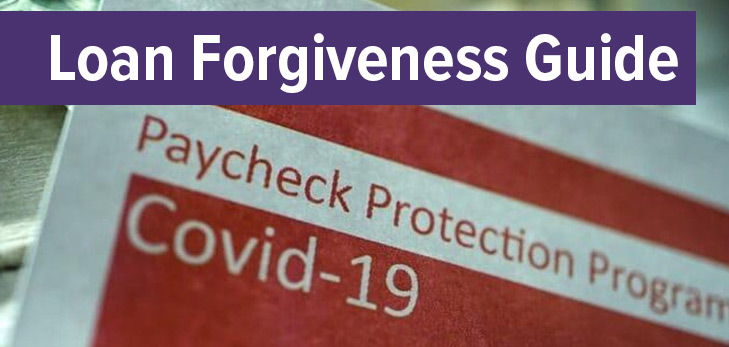Update April 27, 2021: Learn about the latest news around PPP forgiveness from the Nonprofit Finance Fund. Get Recording, and PowerPoint slides
Congratulations! You’ve received your Paycheck Protection Program (PPP) loan … but what should you be doing with the funds and how should you be documenting what you are doing, so that you can maximize the amount that will be forgiven under the law?
Many nonprofit (and small business) leaders across the country have turned their attention to ensuring that their PPP loan will be forgiven by the deadline set by the Small Business Administration (SBA). On June 5th, the Payroll Protection Plan Flexibility Act (PPPFA) extended and clarified the deadlines for loan forgiveness and for uses of the loan funds. (Please see the link to an article from the Nonprofit Quarterly which provides a great explanation of the PPP Flexibility Act of 2020.)
Here’s What We Now Know
- You Will Still Need to Complete Forgiveness Paperwork But Things Have Changed
Every nonprofit and small business – regardless of loan size – will still be required to complete forgiveness paperwork. Get the loan forgiveness application here. We suggest you review it carefully and begin to ensure that you have all the documentation you need to complete it (read a breakdown of the latest Interim Final Rules from the National Council of Nonprofits);
- The Times for Forgiveness Are Changing
Under the PPPFA, however, borrowers may now obtain loan forgiveness equal to the amount spent on payroll and other eligible expenses during a newly established “covered period” that lasts 24 weeks from the date of the loan origination (but not beyond the end of 2020), in addition to the 8-week period “covered period’ that was established under the original CARES Act. If your PPP loan was made before June 5, 2020, you may choose to have your loan forgiveness covered period be the 8-week period beginning on the date your PPP loan was disbursed;
- Document How You Are Using Your Loan Funds
The PPPFA has expanded the cap on non-payroll expenses (interest payments, mortgages, rent or utilities) to 40% rather than the 25% under the original CARES Act. This means that borrowers are now only required to spend 60% of the loan on payroll expenses (a joint statement from the SBA Administrator and Treasury Secretary clarified that partial loan forgiveness will also be available under the 60% threshold, so that if a borrower uses less than 60% of the loan amount for payroll costs during the forgiveness covered period, the borrower will be eligible for partial loan forgiveness based on the amount of the loan used for payroll costs). You will need to show documentation to prove that you followed these rules for fund allocations. If you have not, portions of your loan will be considered ineligible for forgiveness and turned into a regular loan with a 1% interest rate. Under the terms of the new PPPFA however, the term for which any loan would have to be repaid has been extended from two to five years (businesses that received a loan prior to the effective date of the PPPFA will still have a two-year loan, unless the lender agrees to extend the term);
FMA has a free toolkit available online to assist you with managing your PPP loan funds and understanding the forgiveness guidelines, as well as several upcoming webinars in early June.
- But Wait, There is More
- The PPPFA has changed the mandatory deferral period by when borrowers must pay any interest and principal on the loan. It is now either the date on which the SBA makes a loan forgiveness determination, or, (if borrowers do not apply for loan forgiveness) within 10 months of whichever is earlier: (i) the end of the 8 or 24 week loan forgiveness periods, or (ii) December 31, 2020;
- The PPPFA also ensures that borrowers have full access to payroll tax deferments for businesses that take PPP loans;
- Finally, the PPPFA extends to December 31, 2020 the rehiring deadline (originally set at June 30, 2020 in the original CARES Act) to allow PPP borrowers to mitigate any forgiveness reduction associated with a reduction in the number of fulltime employees, and/or salaries or wages.
Right now, the best course of action for nonprofits is to be prepared. If you are documenting your PPP funds, following the guidelines, and open to being flexible to future changes in the guidance, you’ll be prepared to apply for forgiveness when the time comes.
